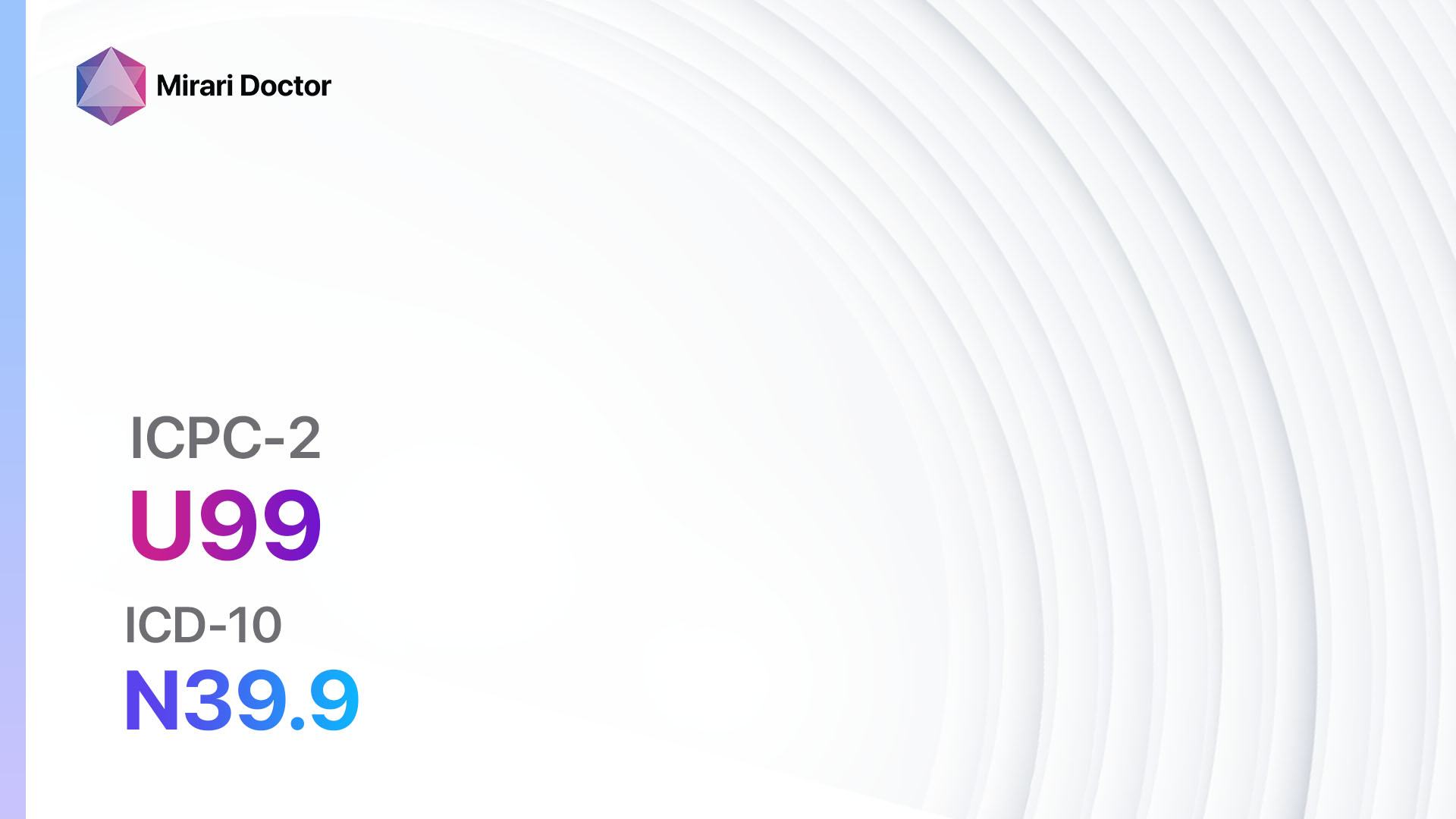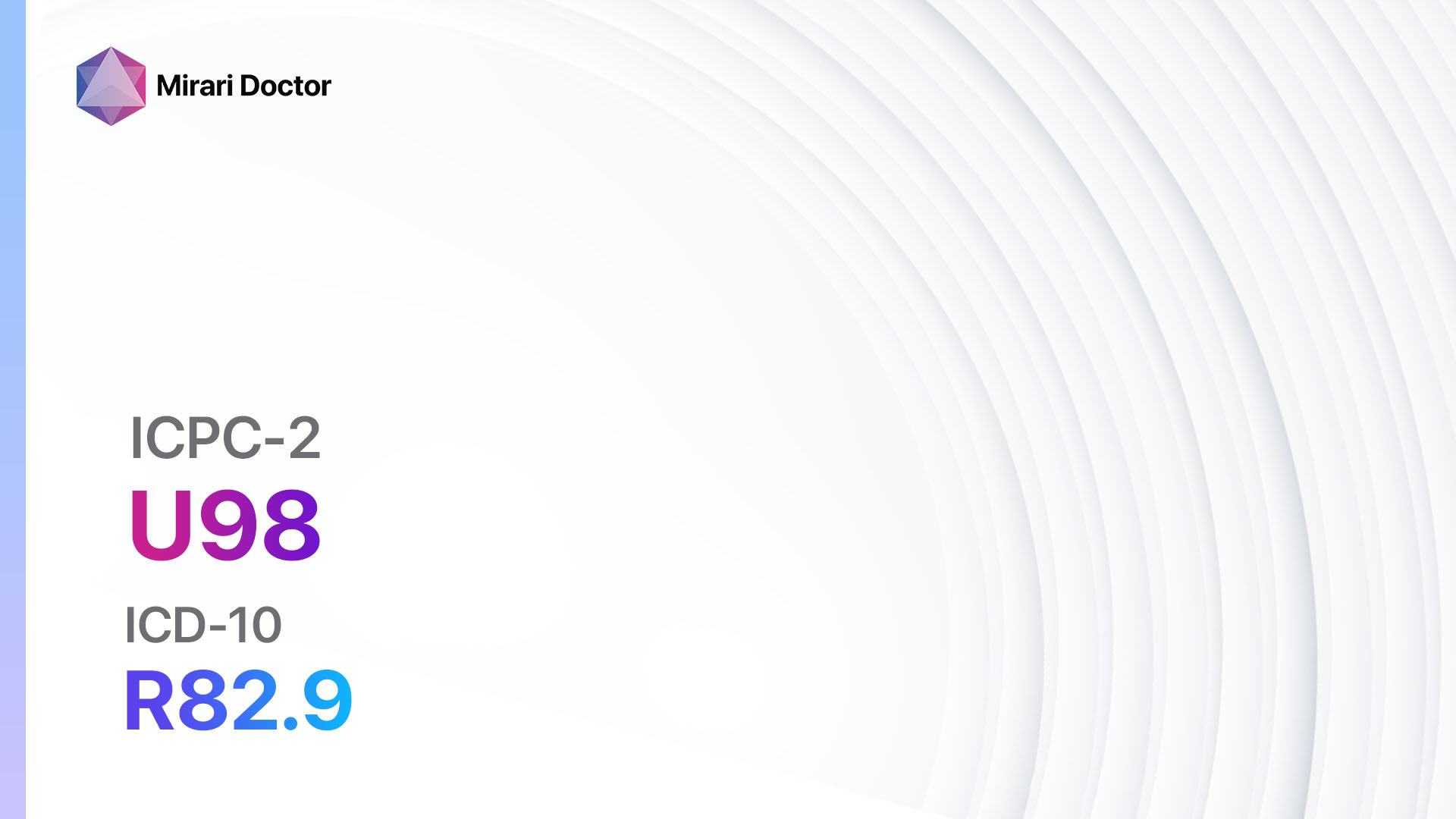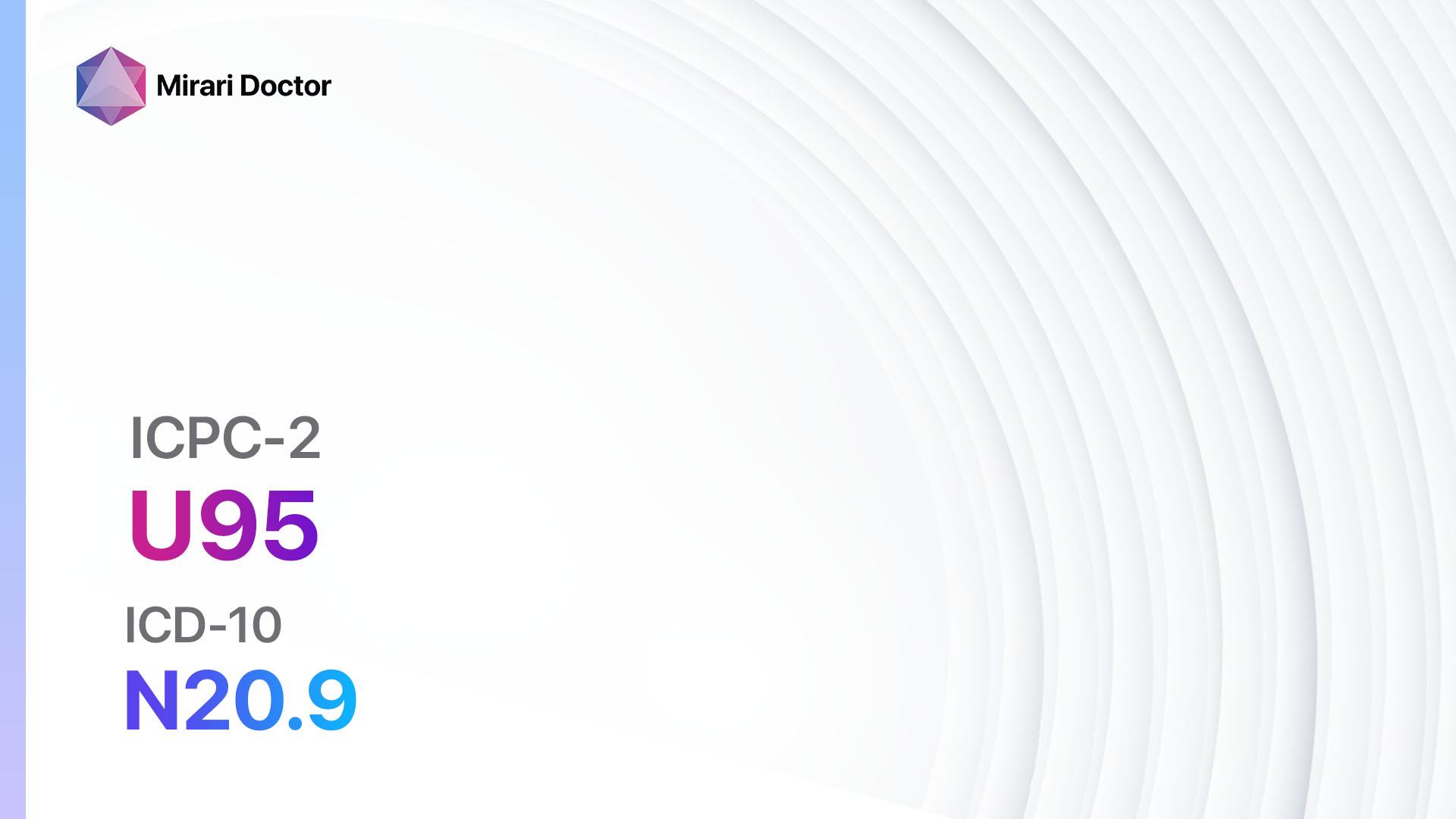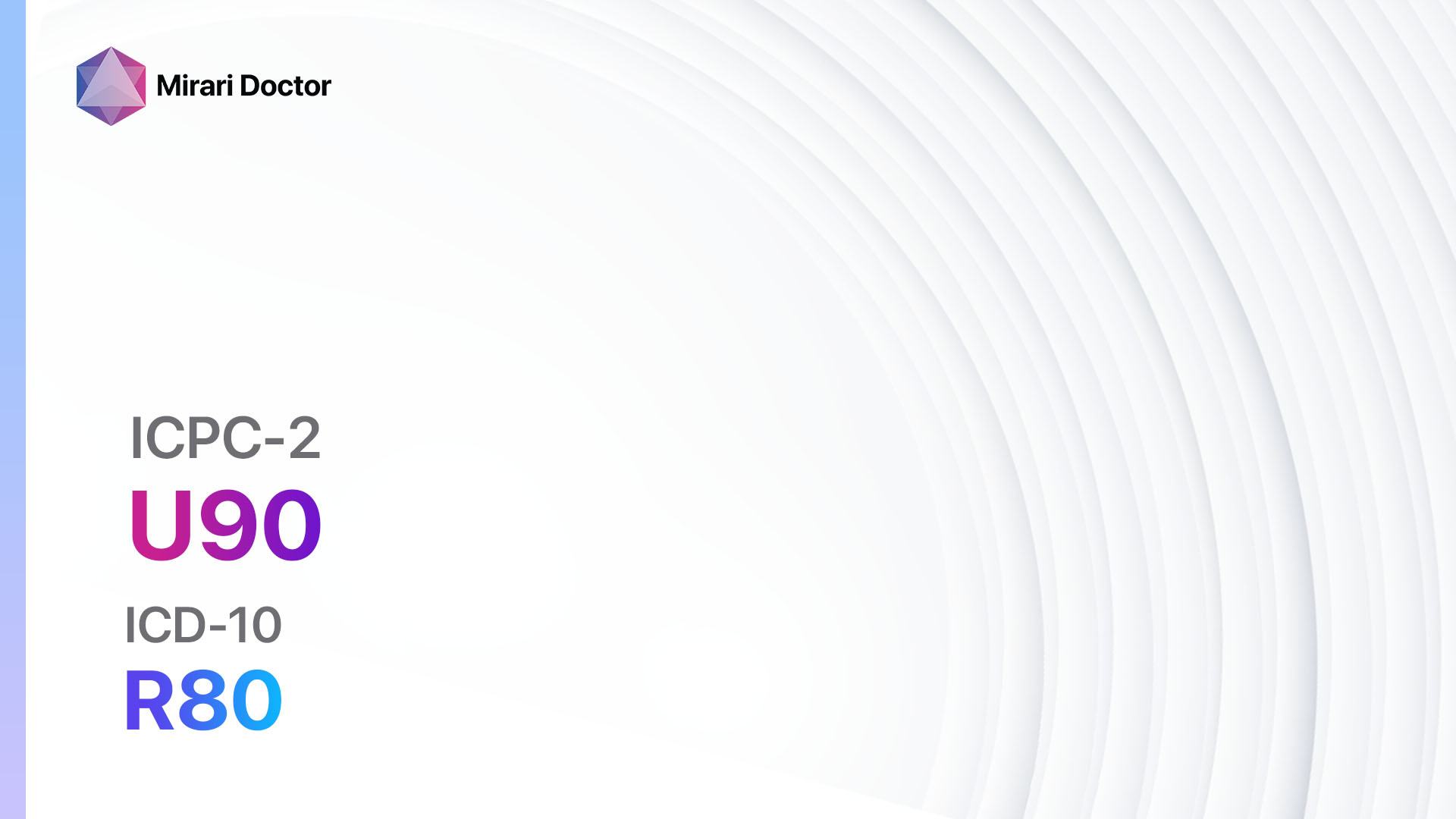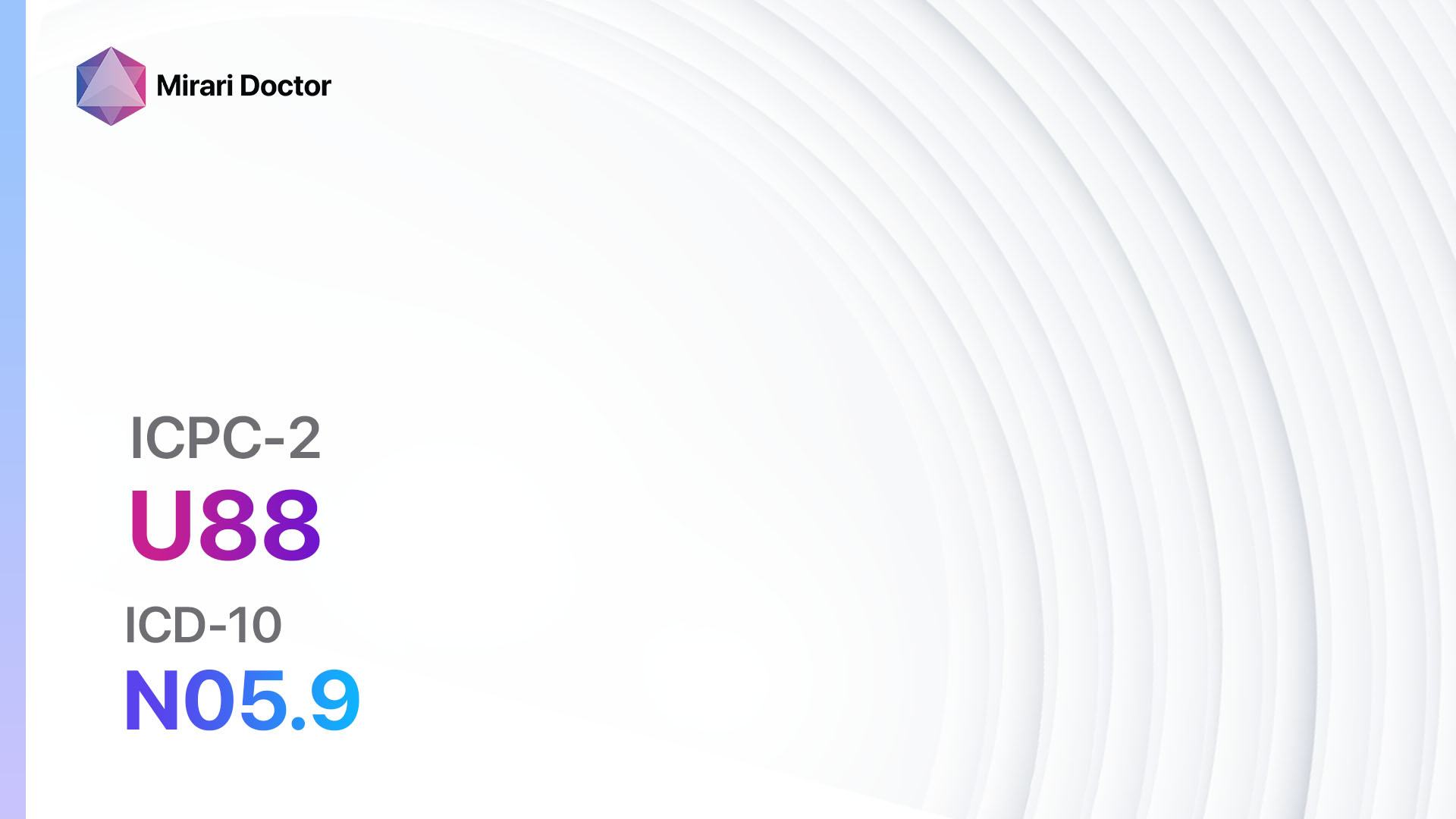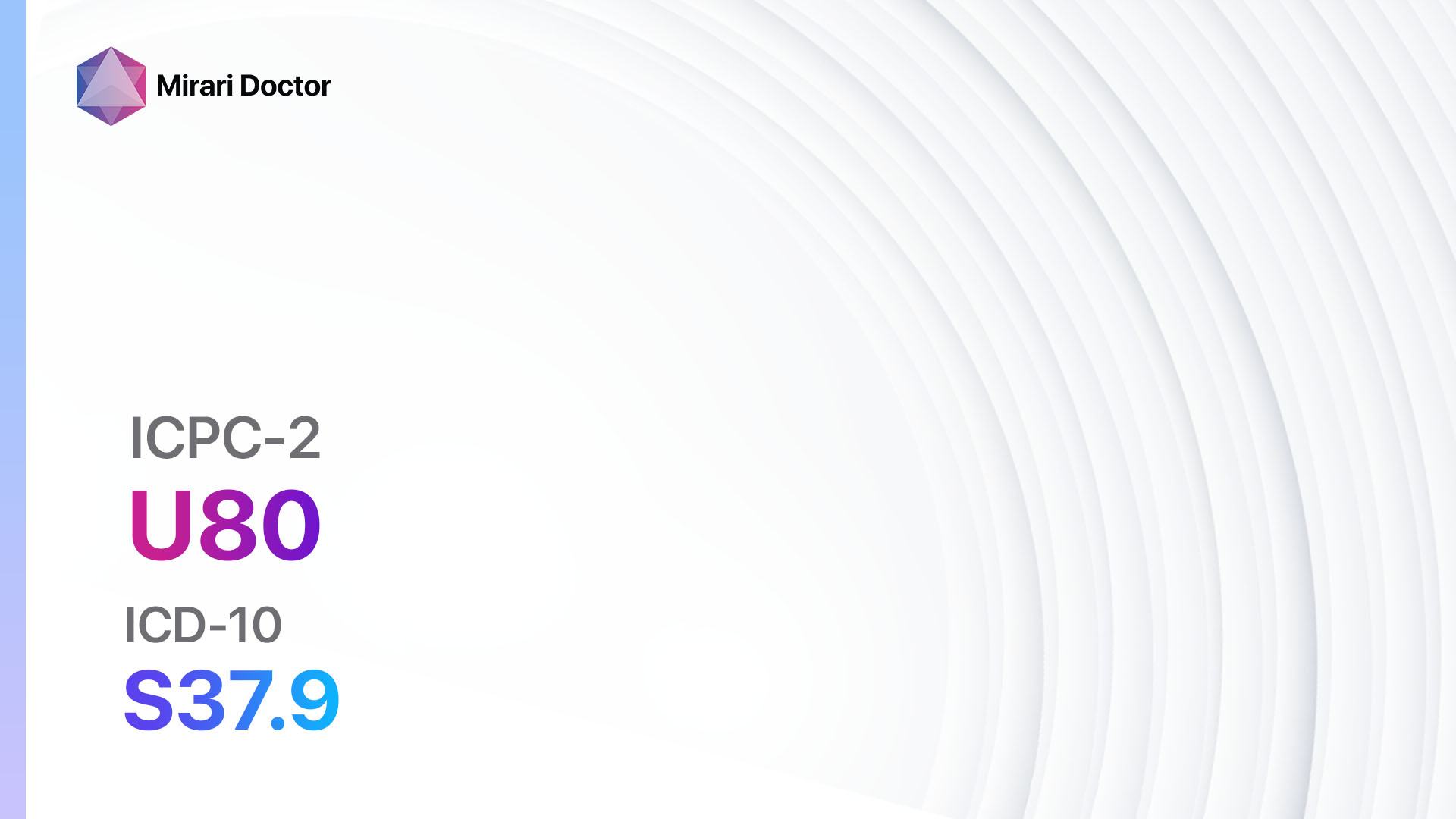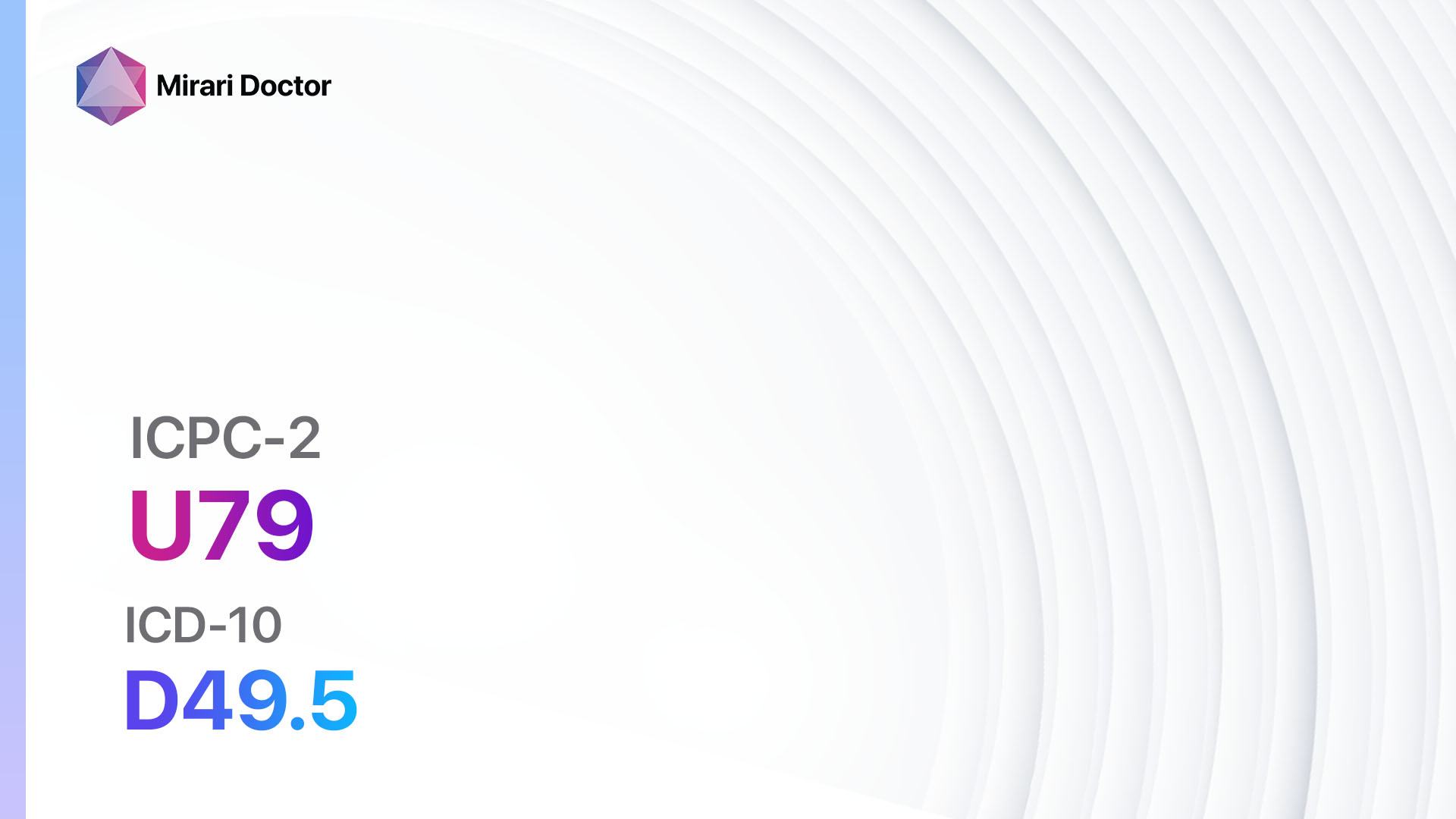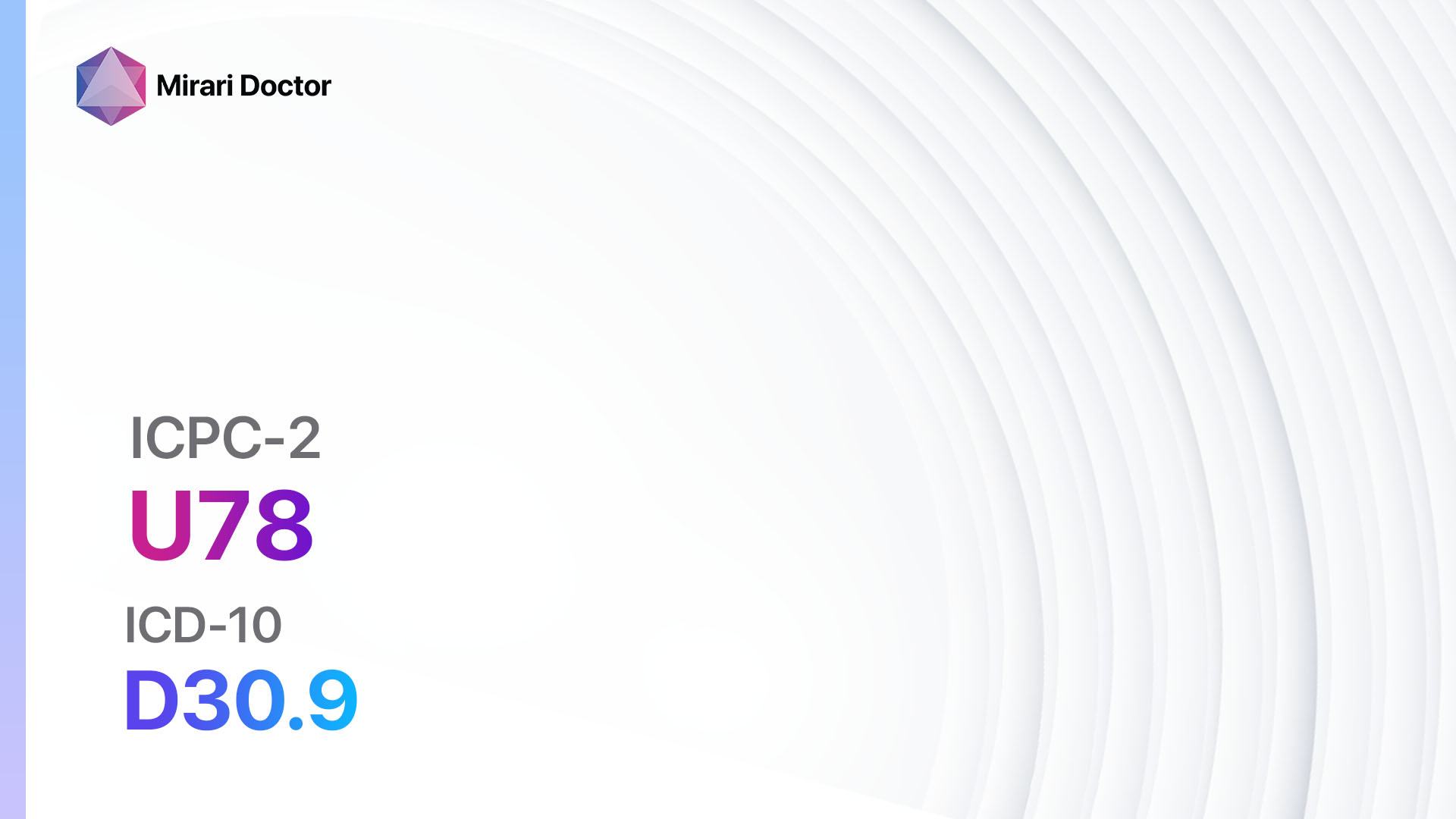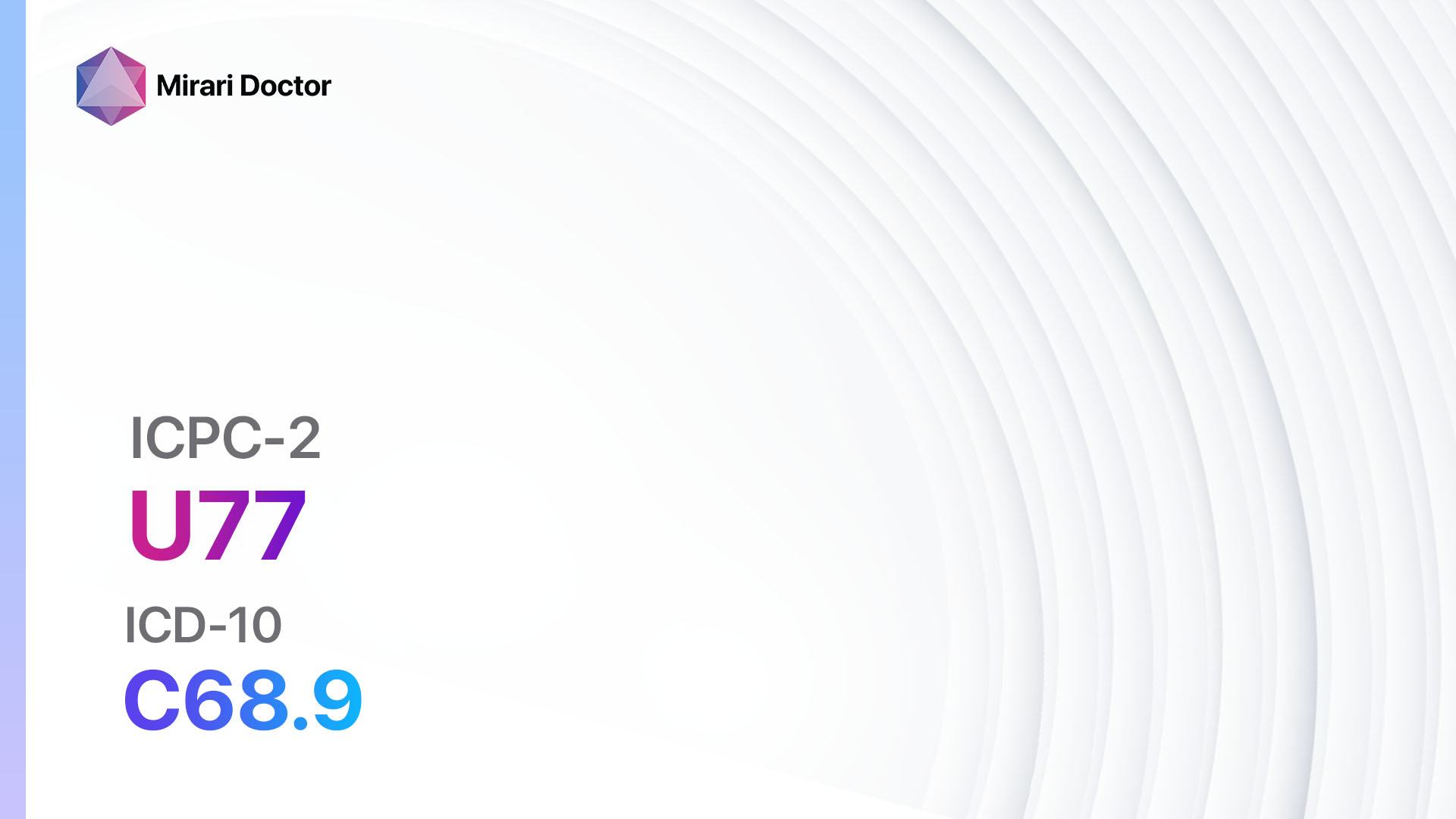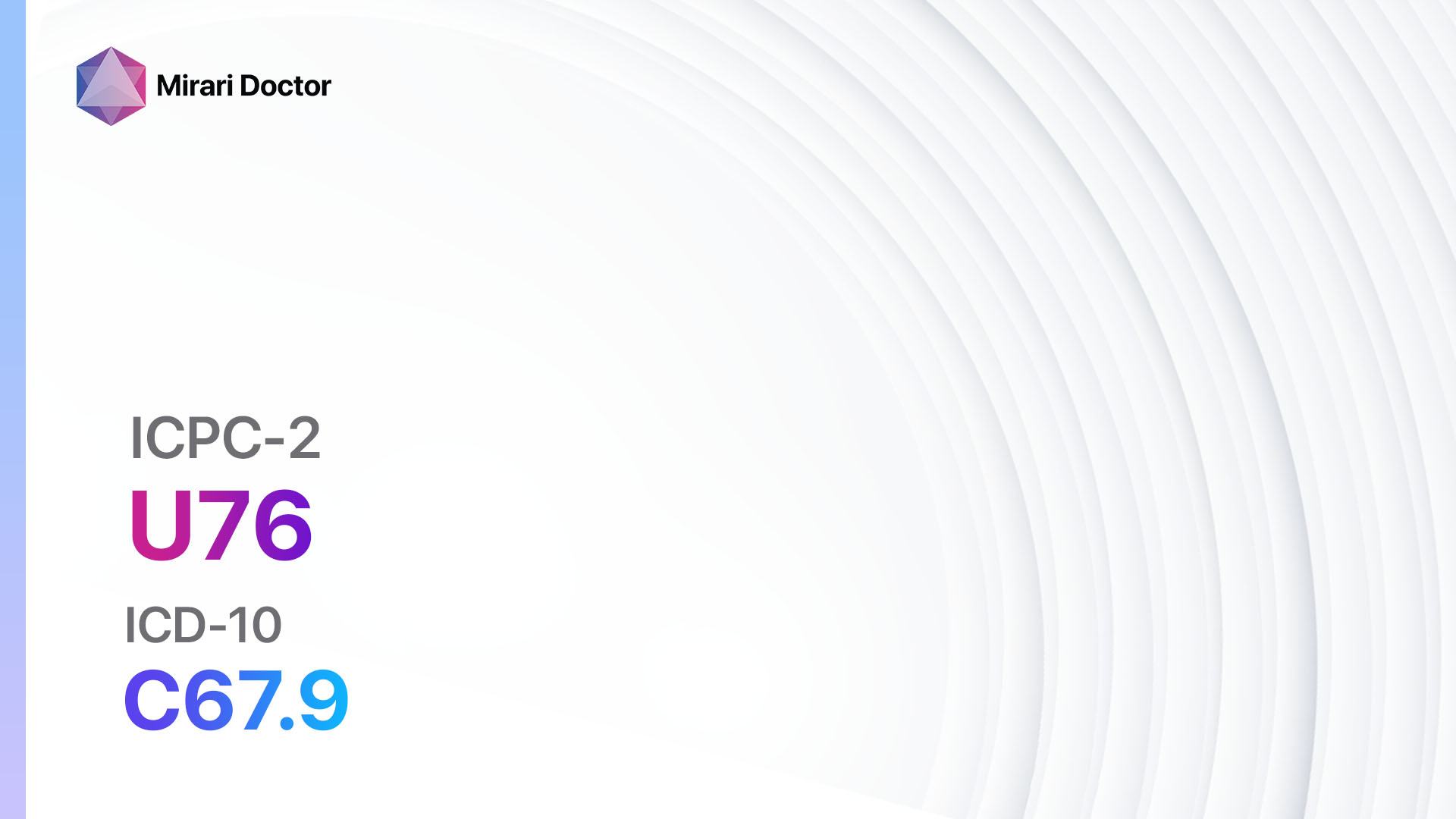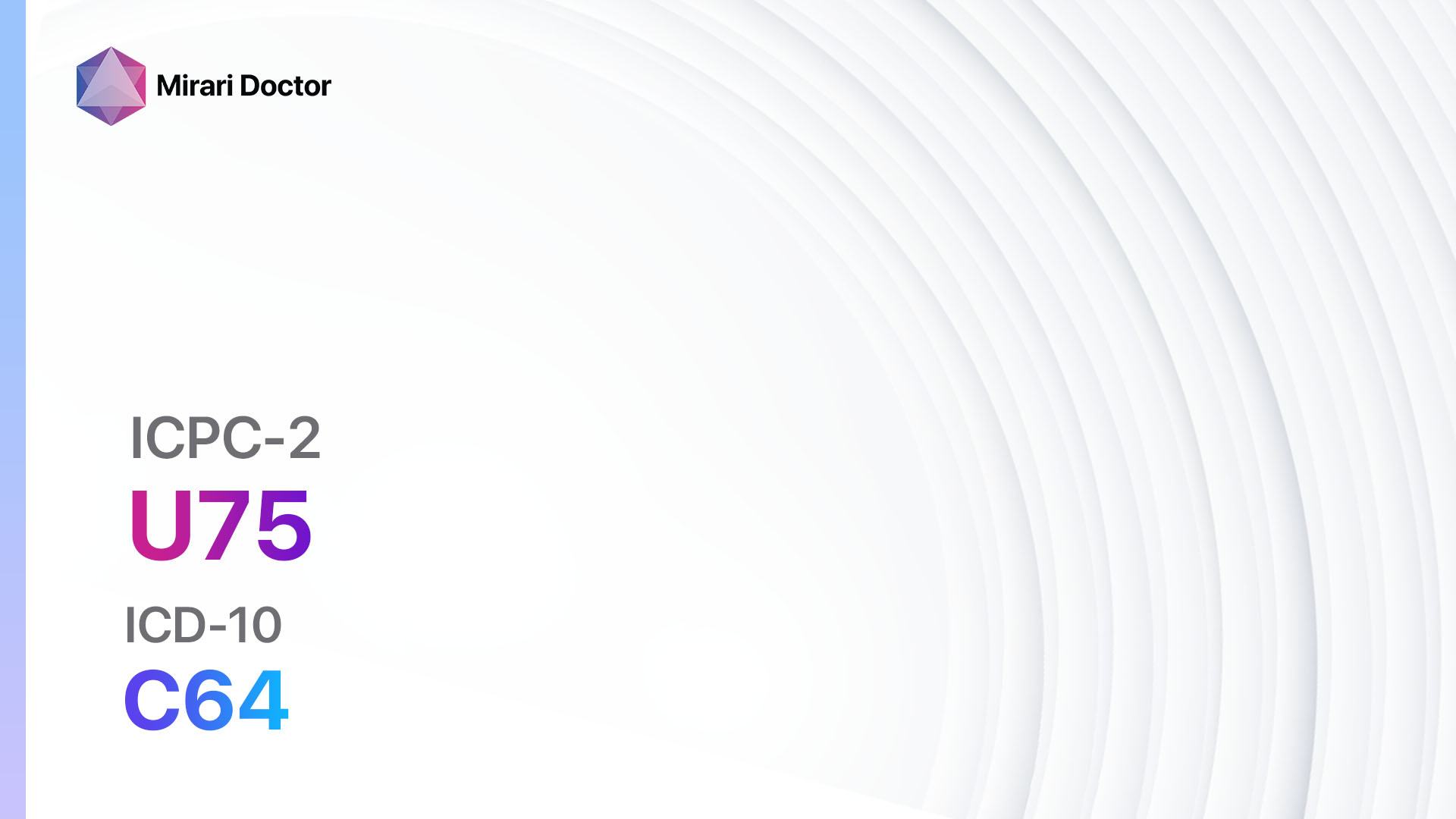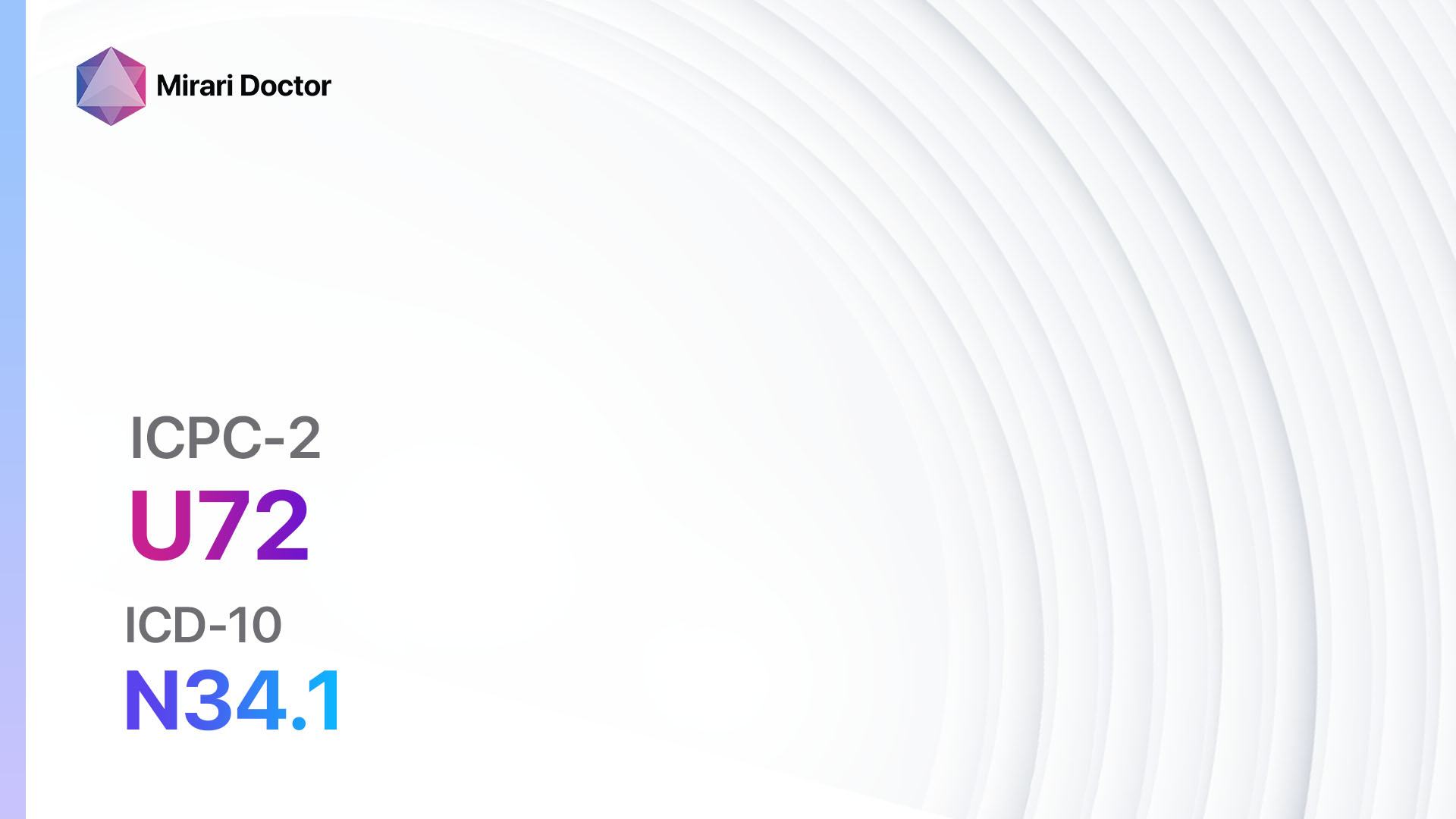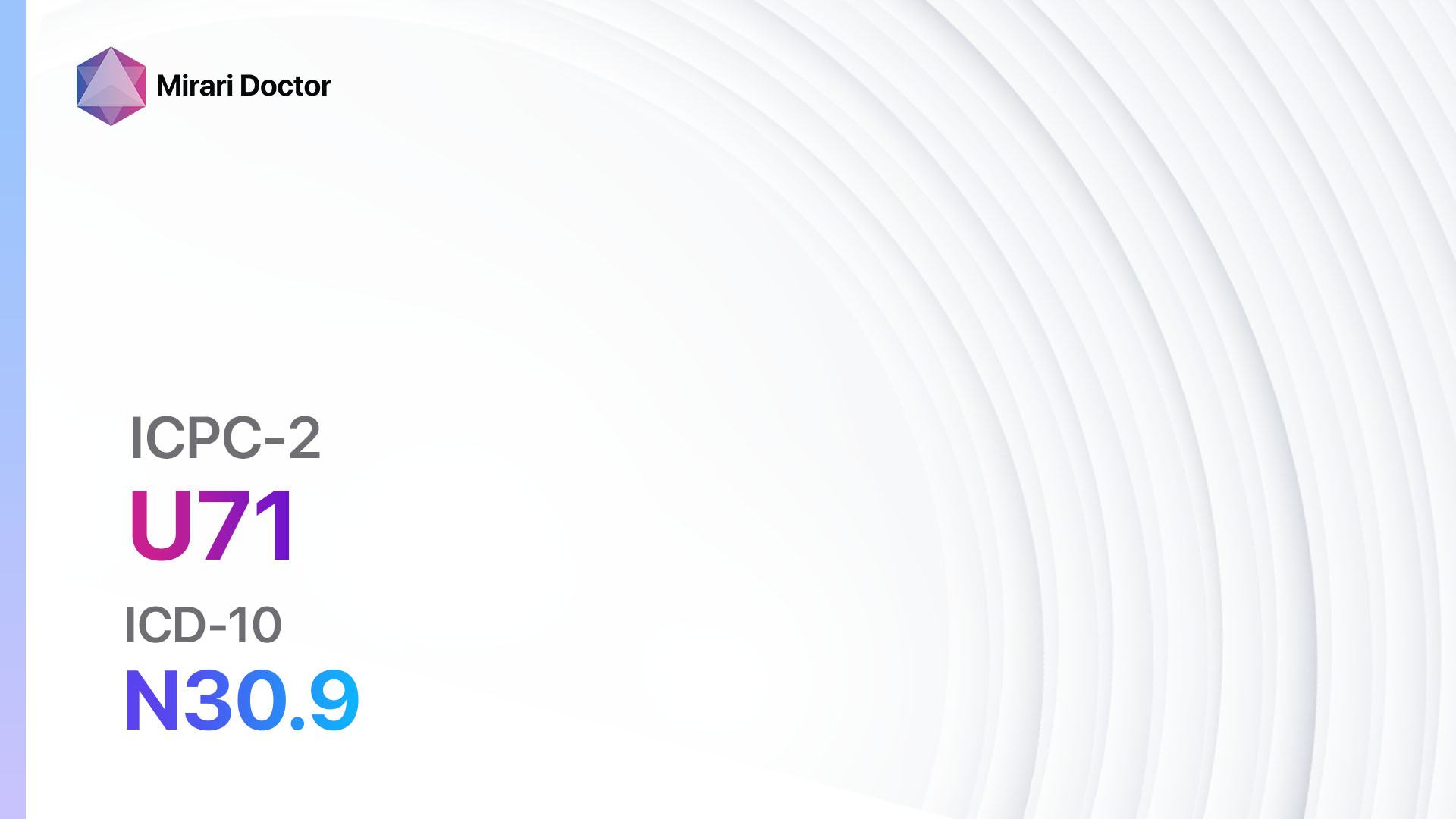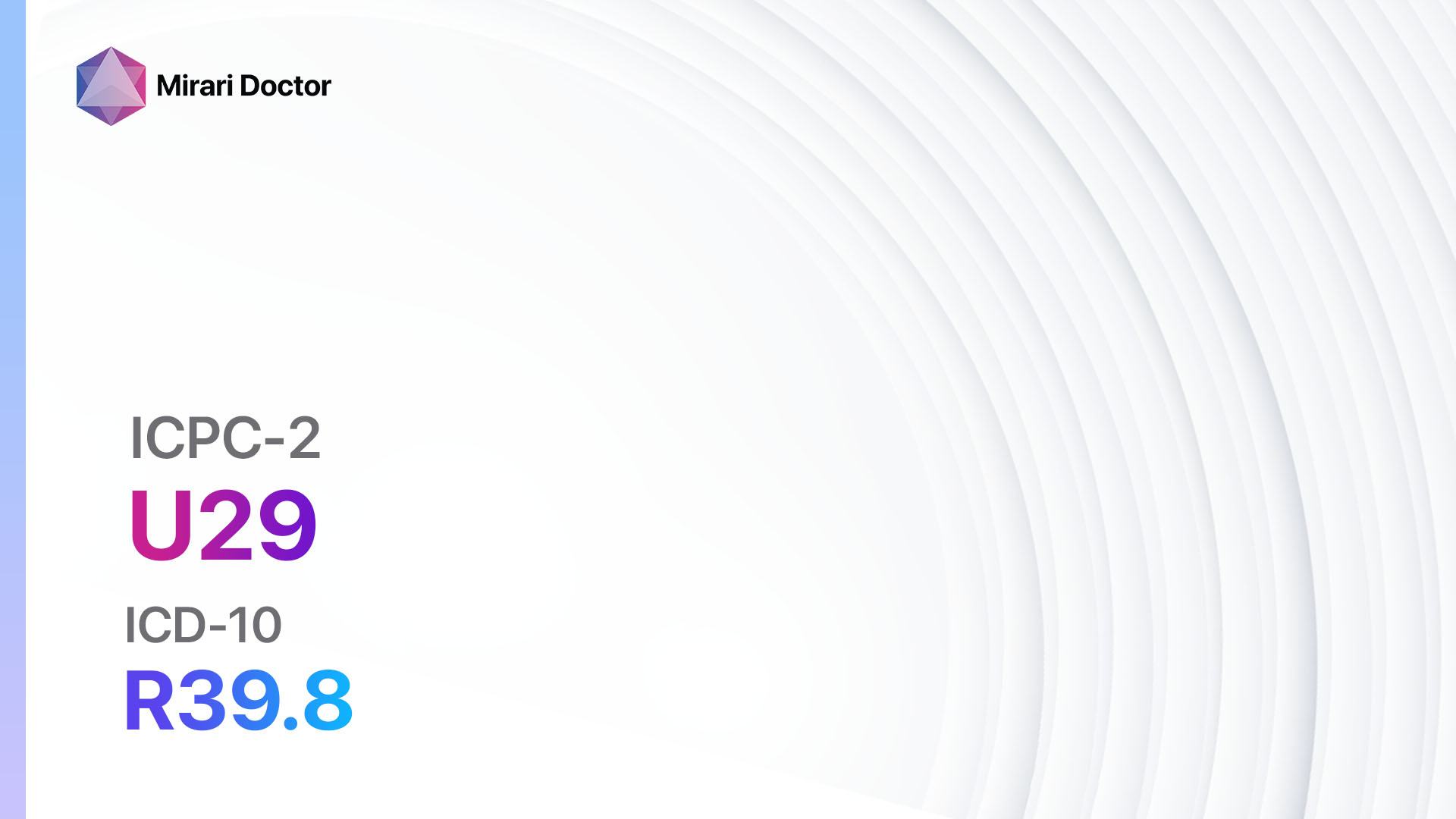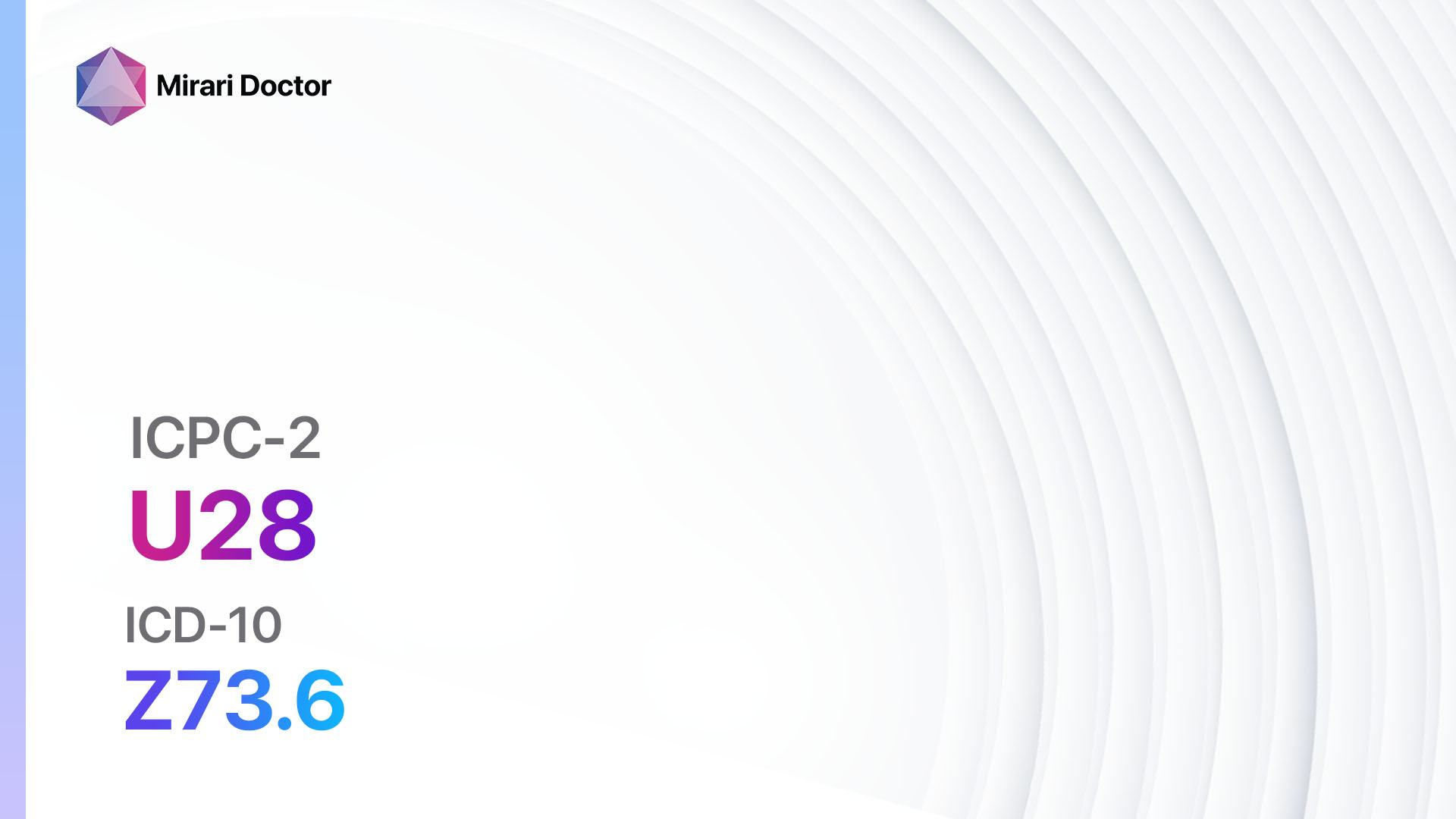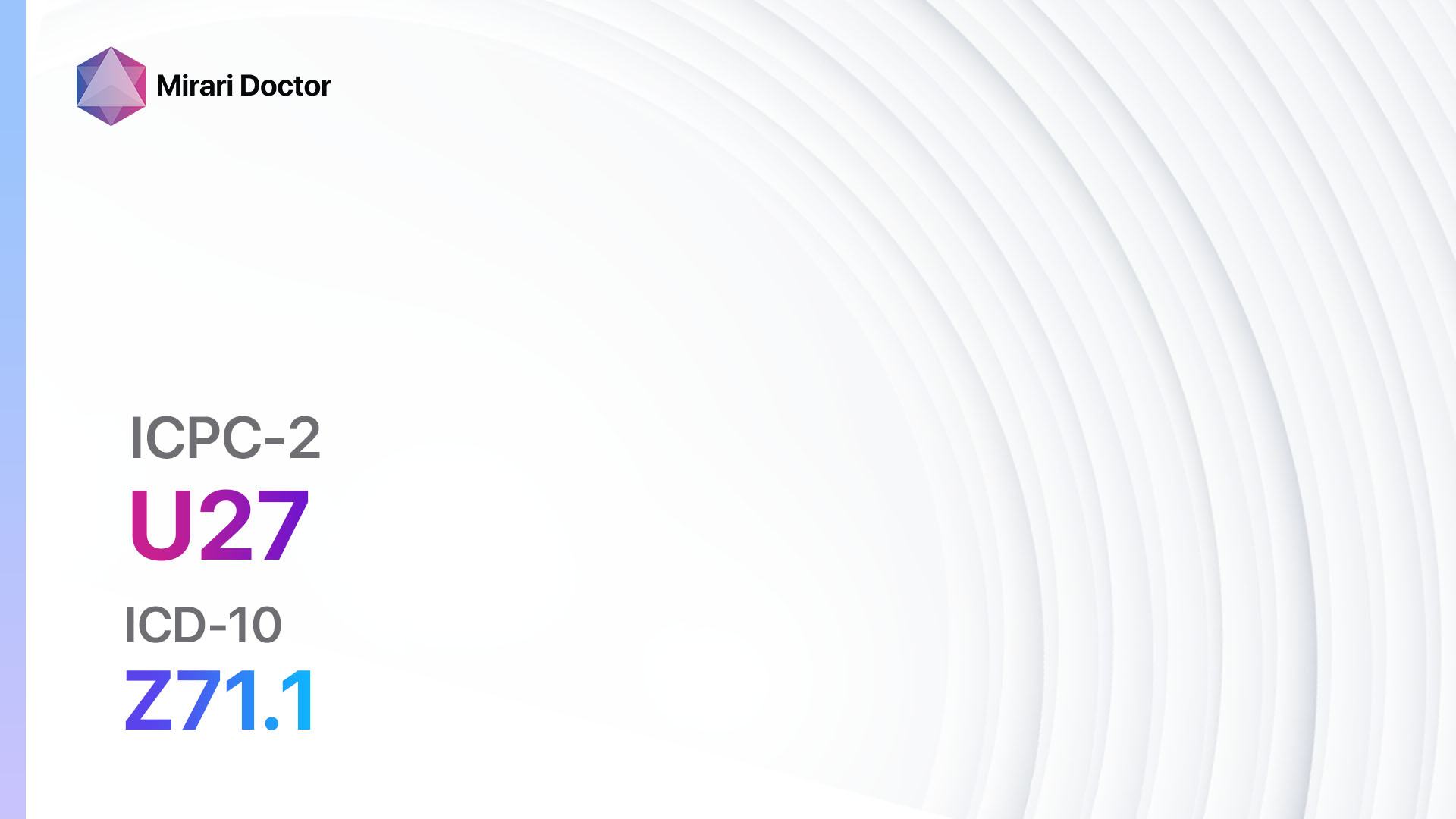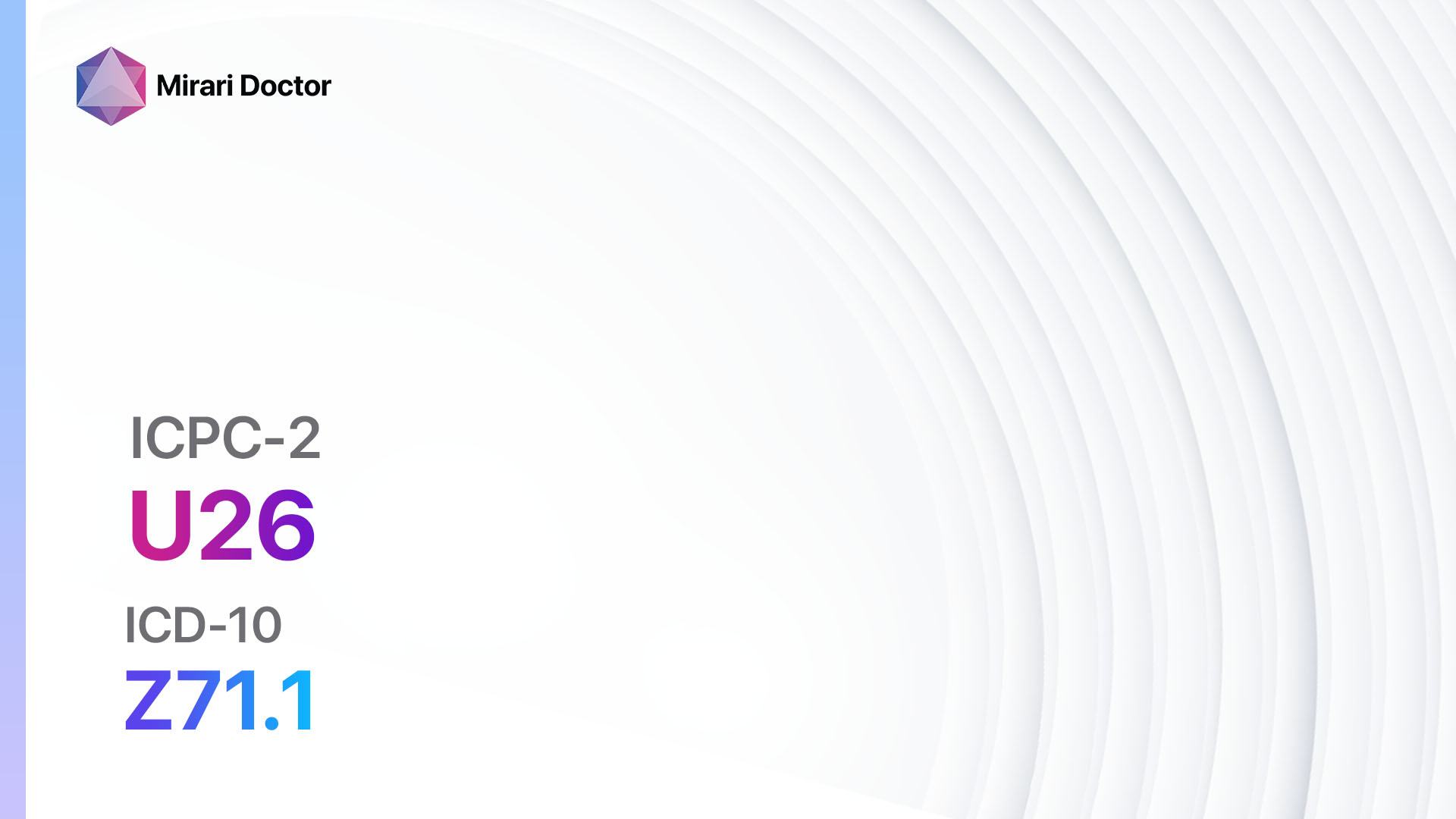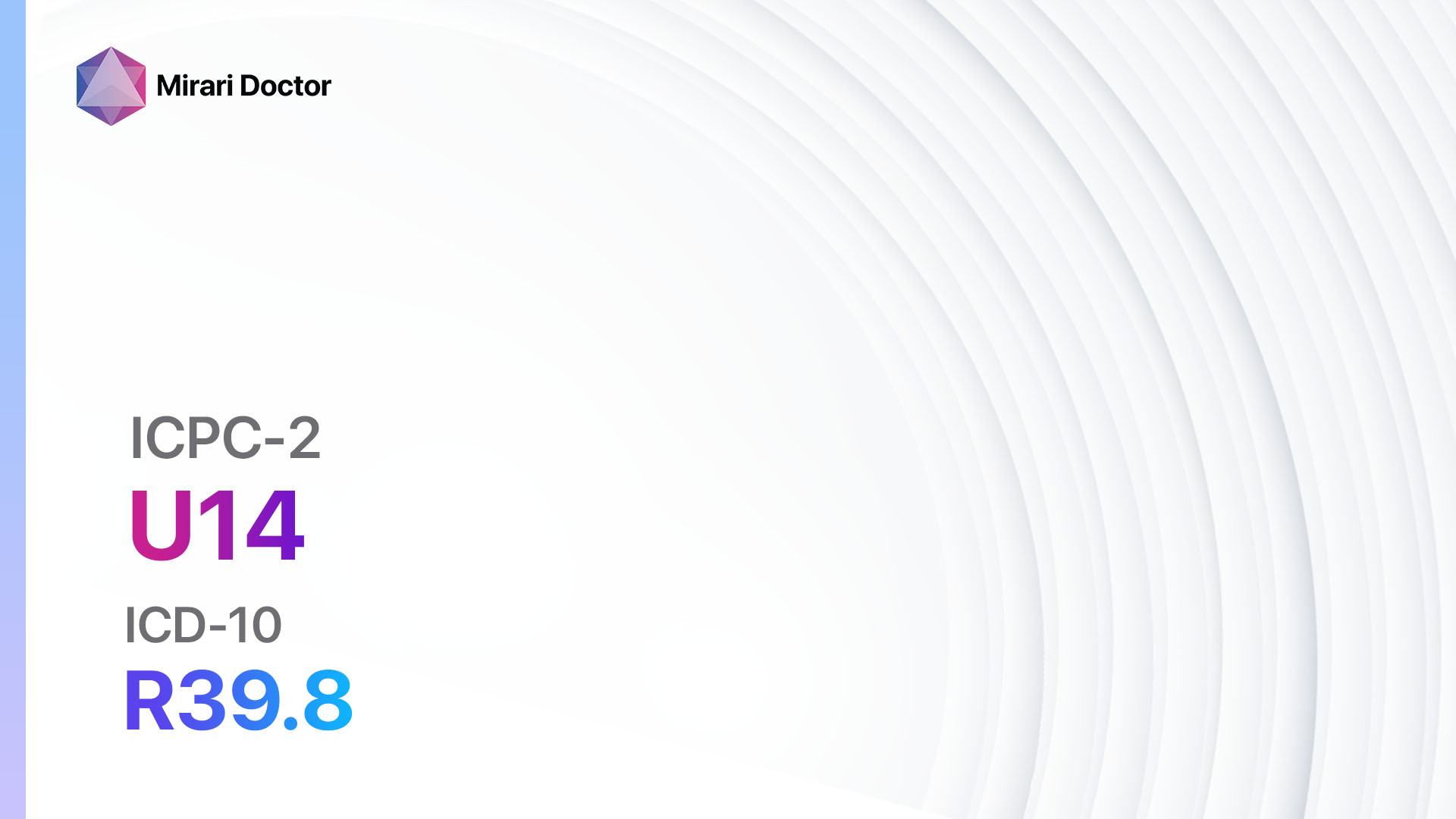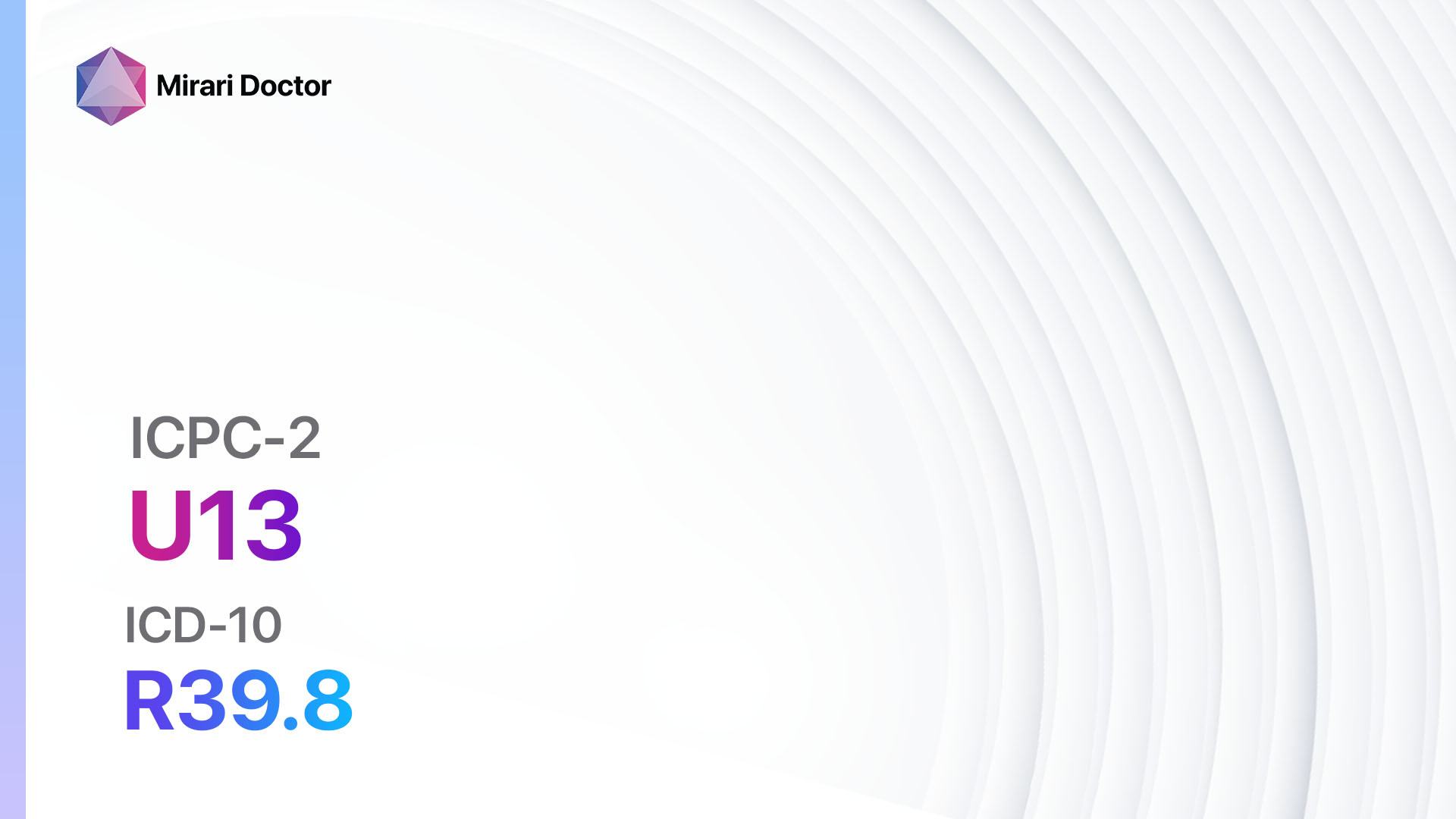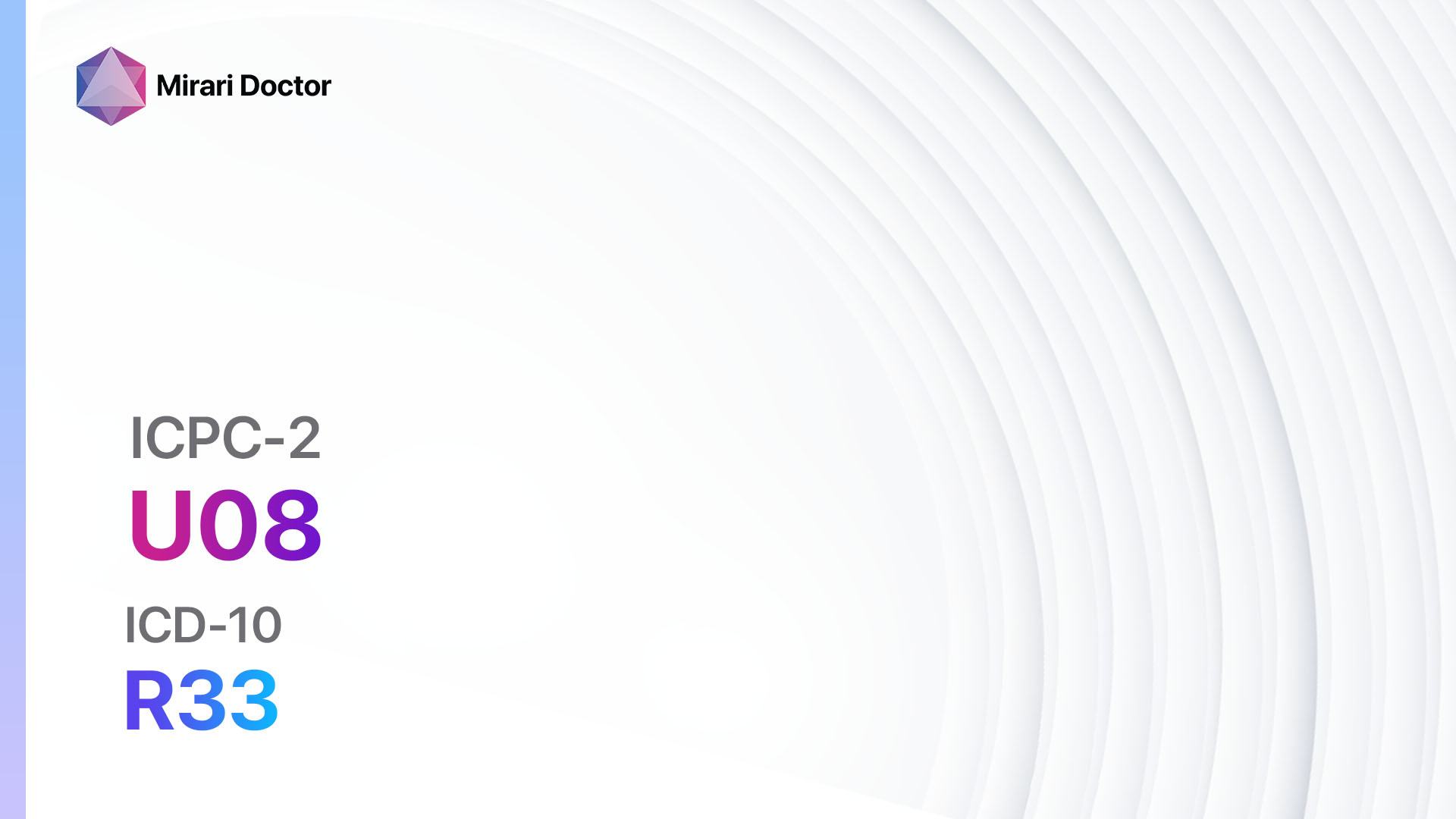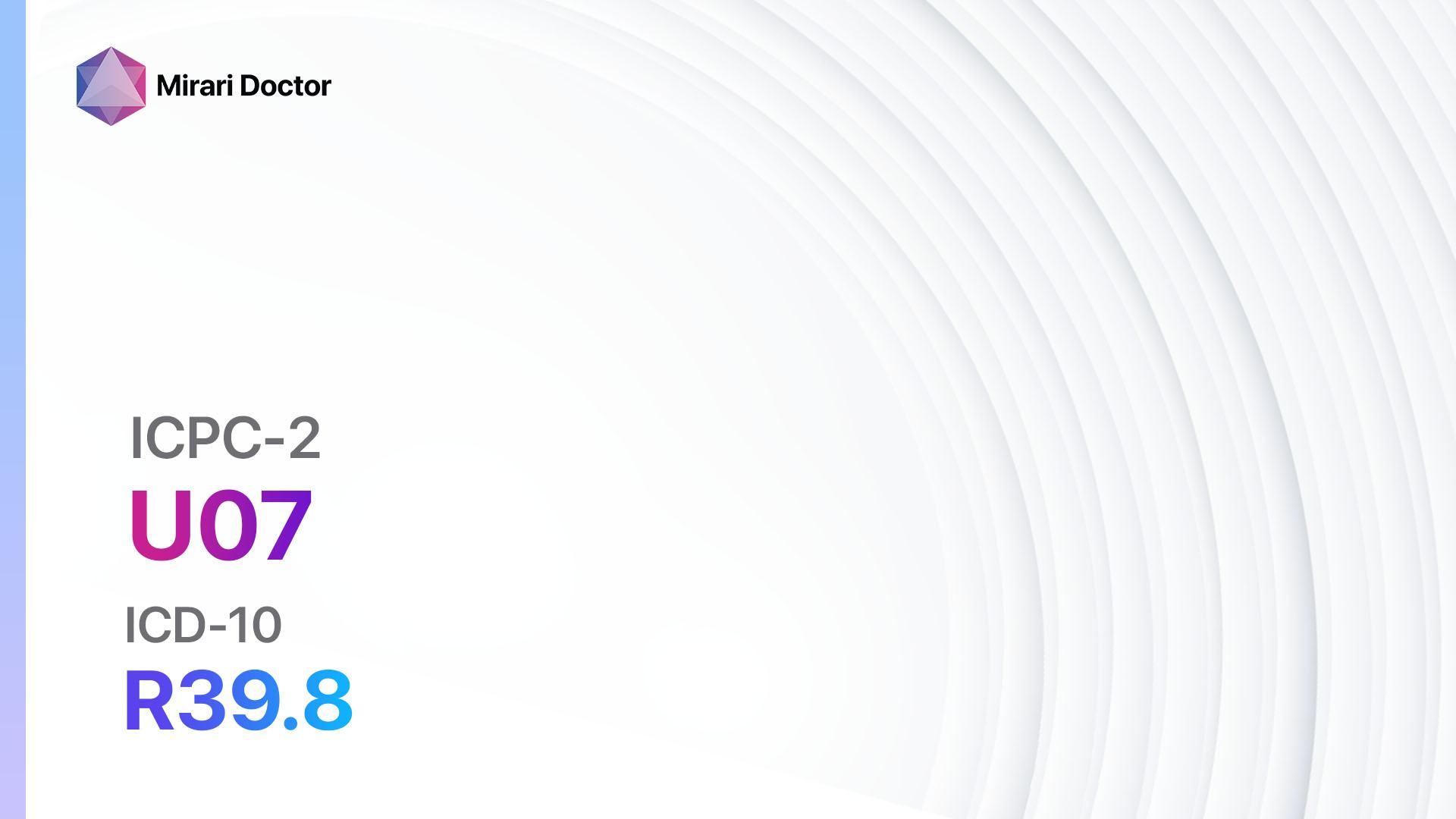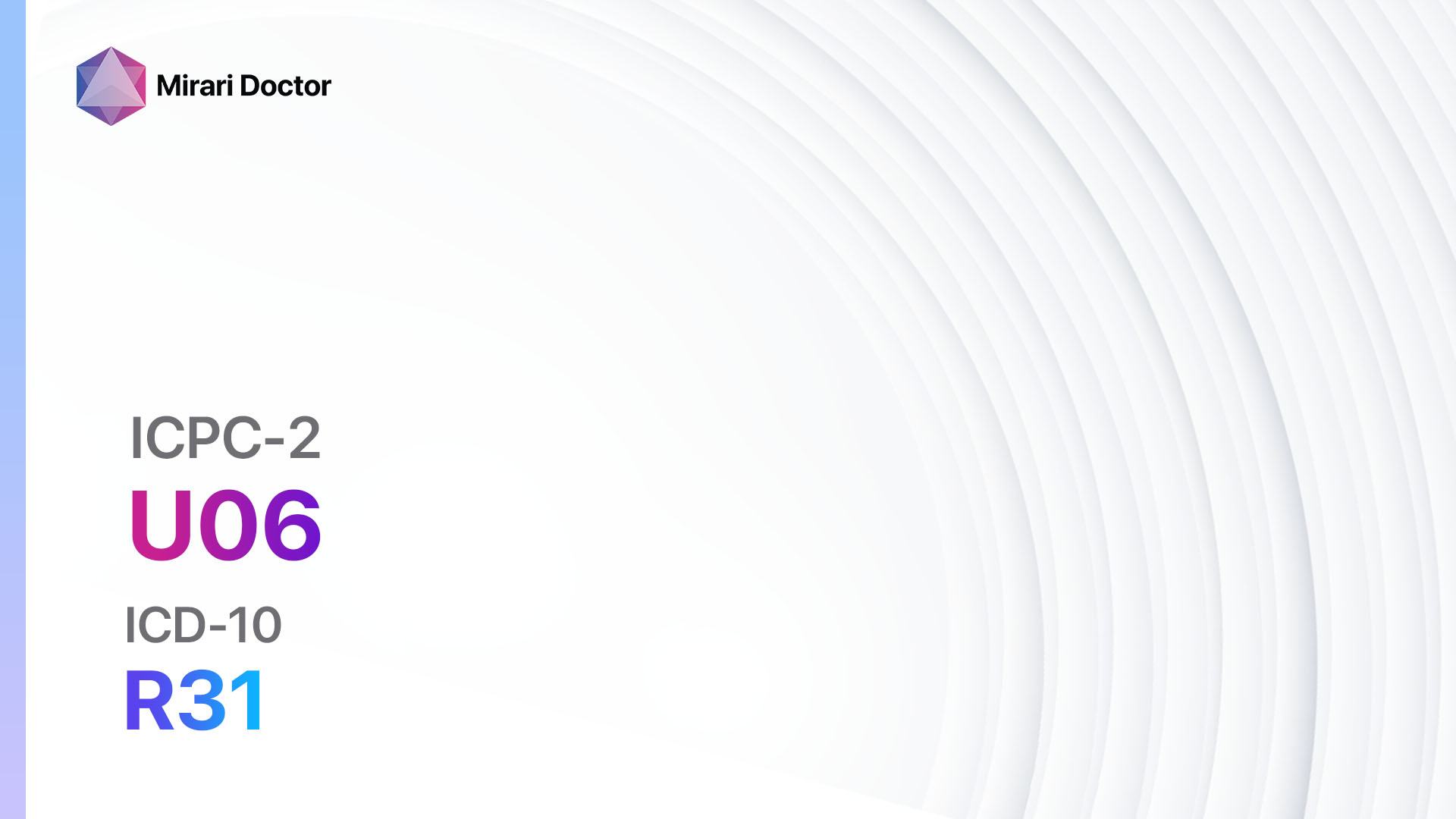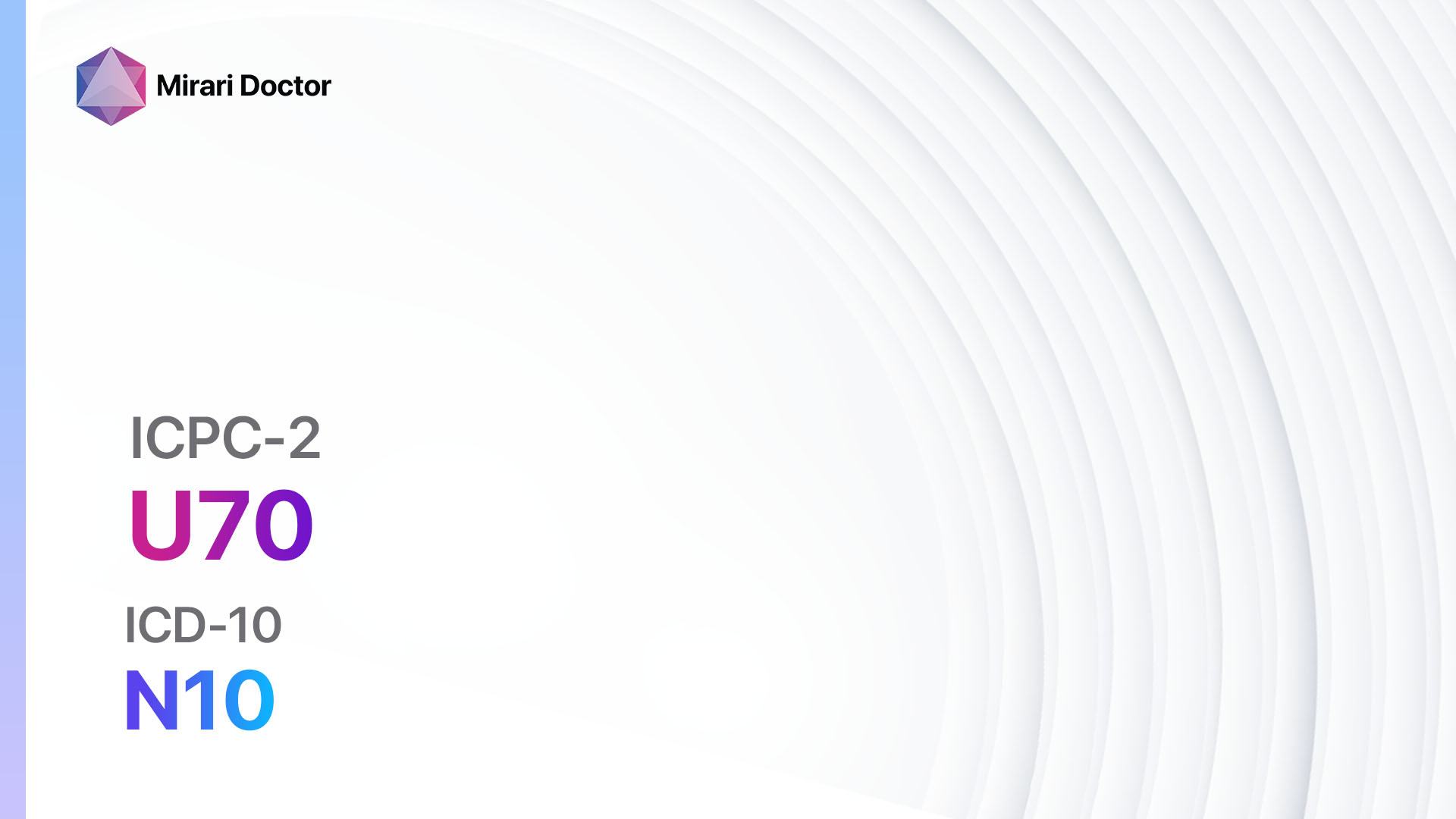
Introduction
Pyelonephritis/pyelitis is a bacterial infection of the kidneys and urinary tract. It is a significant condition that can lead to severe complications if left untreated[1]. The aim of this guide is to provide healthcare professionals with a comprehensive overview of the diagnosis and management of pyelonephritis/pyelitis.
Codes
Symptoms
- Fever: Patients may experience a high fever, typically above 100.4°F (38°C).
- Flank pain: Pain in the lower back or side, usually on one side.
- Urinary symptoms: Frequent urination, urgency, and pain or burning during urination.
- Cloudy or bloody urine: Urine may appear cloudy or have a reddish or pinkish color.
- Fatigue and malaise: Patients may feel tired and generally unwell[2].
Causes
- Bacterial infection: The most common cause of pyelonephritis/pyelitis is a bacterial infection, usually originating from the lower urinary tract[3].
- Urinary tract abnormalities: Structural abnormalities in the urinary tract, such as kidney stones or vesicoureteral reflux, can increase the risk of infection.
- Catheterization: Indwelling urinary catheters can introduce bacteria into the urinary tract, leading to infection[4].
Diagnostic Steps
Medical History
- Gather information about the patient’s symptoms, including the duration and severity.
- Identify any risk factors for pyelonephritis/pyelitis, such as urinary tract abnormalities or recent catheterization.
- Inquire about any previous episodes of urinary tract infections or kidney problems[5].
Physical Examination
- Perform a thorough physical examination, including a focused examination of the abdomen and back.
- Palpate the abdomen for tenderness or swelling in the kidney area.
- Check for signs of systemic infection, such as fever or elevated heart rate[6].
Laboratory Tests
- Urinalysis: A urine sample is analyzed for the presence of bacteria, white blood cells, and red blood cells. Positive leukocyte esterase and nitrite tests indicate a urinary tract infection[7].
- Urine culture and sensitivity: A urine sample is cultured to identify the specific bacteria causing the infection and determine the most effective antibiotic treatment.
- Complete blood count (CBC): Elevated white blood cell count may indicate an infection.
- Blood cultures: If the patient is severely ill or has signs of systemic infection, blood cultures may be obtained to identify the bacteria causing the infection[8].
Diagnostic Imaging
- Renal ultrasound: This non-invasive imaging modality can detect abnormalities in the kidneys, such as kidney stones or abscesses[9].
- CT scan: A CT scan may be performed to provide detailed images of the kidneys and urinary tract, particularly in complicated cases or when an abscess is suspected.
Other Tests
- Voiding cystourethrogram (VCUG): This imaging test is used to evaluate the structure and function of the urinary tract, particularly in patients with recurrent infections or urinary tract abnormalities.
- Renal scintigraphy: This nuclear medicine test can assess kidney function and detect any areas of decreased blood flow or scarring[10].
Follow-up and Patient Education
- Schedule a follow-up appointment to monitor the patient’s response to treatment and ensure complete resolution of the infection.
- Educate the patient about the importance of completing the full course of antibiotics and maintaining good urinary hygiene to prevent recurrent infections.
Possible Interventions
Traditional Interventions
Medications:
Top 5 drugs for Pyelonephritis/pyelitis:
- Ciprofloxacin:
- Cost: $10-$50 for a 10-day course.
- Contraindications: Hypersensitivity to fluoroquinolones, history of tendon disorders.
- Side effects: Nausea, diarrhea, headache.
- Severe side effects: Tendon rupture, central nervous system effects.
- Drug interactions: Antacids, warfarin.
- Warning: Increased risk of Clostridium difficile infection.
- Trimethoprim/sulfamethoxazole:
- Cost: $10-$30 for a 10-day course.
- Contraindications: Hypersensitivity to sulfonamides, megaloblastic anemia.
- Side effects: Nausea, vomiting, rash.
- Severe side effects: Stevens-Johnson syndrome, toxic epidermal necrolysis.
- Drug interactions: Warfarin, methotrexate.
- Warning: Increased risk of hyperkalemia in patients with renal impairment.
- Amoxicillin/clavulanate:
- Cost: $20-$50 for a 10-day course.
- Contraindications: Hypersensitivity to penicillins, history of cholestatic jaundice.
- Side effects: Diarrhea, rash, nausea.
- Severe side effects: Severe allergic reactions, liver dysfunction.
- Drug interactions: Methotrexate, allopurinol.
- Warning: Risk of Clostridium difficile infection.
- Ceftriaxone:
- Cost: $10-$50 for a single dose.
- Contraindications: Hypersensitivity to cephalosporins, history of severe hypersensitivity reactions to penicillins.
- Side effects: Diarrhea, rash, headache.
- Severe side effects: Severe allergic reactions, pseudomembranous colitis.
- Drug interactions: Calcium-containing solutions, loop diuretics.
- Warning: Risk of Clostridium difficile infection.
- Gentamicin:
- Cost: $10-$50 for a 7-10 day course.
- Contraindications: Hypersensitivity to aminoglycosides, myasthenia gravis.
- Side effects: Nausea, vomiting, dizziness.
- Severe side effects: Nephrotoxicity, ototoxicity.
- Drug interactions: Loop diuretics, vancomycin.
- Warning: Monitoring of renal function and drug levels required.
Alternative Drugs:
- Nitrofurantoin: Effective against many urinary tract pathogens, but not recommended in patients with renal impairment.
- Fosfomycin: A single-dose oral antibiotic with broad-spectrum activity against urinary tract pathogens.
- Cephalexin: A first-generation cephalosporin that can be used in patients with mild to moderate infections.
- Levofloxacin: An alternative fluoroquinolone with similar efficacy to ciprofloxacin.
- Aztreonam: A monobactam antibiotic that can be used in patients with beta-lactam allergies.
Surgical Procedures:
- In most cases, surgical intervention is not required for the treatment of pyelonephritis/pyelitis. However, in rare cases where an abscess or obstruction is present, drainage or surgical correction may be necessary.
Alternative Interventions
- Probiotics: Probiotic supplements containing Lactobacillus or Bifidobacterium strains may help restore the natural balance of bacteria in the urinary tract. Cost: $10-$30 per month.
- Cranberry products: Cranberry juice or supplements may help prevent urinary tract infections by inhibiting bacterial adhesion to the urinary tract. Cost: $10-$20 per month.
- D-mannose: A natural sugar that can help prevent bacterial adhesion to the urinary tract. Cost: $20-$40 per month.
- Herbal remedies: Certain herbs, such as uva ursi and goldenseal, have antimicrobial properties and may be used as adjunctive treatments. Cost: Varies depending on the specific herb and formulation.
Lifestyle Interventions
- Hydration: Encourage patients to drink plenty of fluids to help flush out bacteria from the urinary tract. Cost: Varies depending on the cost of bottled water or beverages.
- Urinary hygiene: Educate patients about the importance of proper hygiene, including wiping from front to back after urination and avoiding the use of irritating feminine products. Cost: Minimal.
- Avoiding bladder irritants: Advise patients to avoid caffeine, alcohol, and spicy foods, which can irritate the bladder and increase the risk of infection. Cost: Varies depending on dietary choices.
- Regular urination: Encourage patients to empty their bladder regularly to prevent the buildup of bacteria. Cost: None.
It is important to note that the cost ranges provided are approximate and may vary depending on the location and availability of the interventions.
Mirari Cold Plasma Alternative Intervention
Understanding Mirari Cold Plasma
- Safe and Non-Invasive Treatment: Mirari Cold Plasma is a safe and non-invasive treatment option for various skin conditions. It does not require incisions, minimizing the risk of scarring, bleeding, or tissue damage.
- Efficient Extraction of Foreign Bodies: Mirari Cold Plasma facilitates the removal of foreign bodies from the skin by degrading and dissociating organic matter, allowing easier access and extraction.
- Pain Reduction and Comfort: Mirari Cold Plasma has a local analgesic effect, providing pain relief during the treatment, making it more comfortable for the patient.
- Reduced Risk of Infection: Mirari Cold Plasma has antimicrobial properties, effectively killing bacteria and reducing the risk of infection.
- Accelerated Healing and Minimal Scarring: Mirari Cold Plasma stimulates wound healing and tissue regeneration, reducing healing time and minimizing the formation of scars.
Mirari Cold Plasma Prescription
Video instructions for using Mirari Cold Plasma Device – U70 Pyelonephritis/pyelitis (ICD-10:N10)
| Mild | Moderate | Severe |
| Mode setting: 1 (Infection) Location: 2 (Prostate & Uterus) Morning: 15 minutes, Evening: 15 minutes | Mode setting: 1 (Infection) Location: 2 (Prostate & Uterus) Morning: 30 minutes, Lunch: 30 minutes, Evening: 30 minutes | Mode setting: 1 (Infection) Location: 2 (Prostate & Uterus) Morning: 30 minutes, Lunch: 30 minutes, Evening: 30 minutes |
| Mode setting: 6 (Liver/Kidney Therapy) Location: 2 (Prostate & Uterus) Morning: 15 minutes, Evening: 15 minutes | Mode setting: 6 (Liver/Kidney Therapy) Location: 2 (Prostate & Uterus) Morning: 30 minutes, Lunch: 30 minutes, Evening: 30 minutes | Mode setting: 6 (Liver/Kidney Therapy) Location: 2 (Prostate & Uterus) Morning: 30 minutes, Lunch: 30 minutes, Evening: 30 minutes |
| Mode setting: 6 (Liver/Kidney Therapy) Location: 3 (Kidney, Liver & Spleen) Morning: 15 minutes, Evening: 15 minutes | Mode setting: 6 (Liver/Kidney Therapy) Location: 3 (Kidney, Liver & Spleen) Morning: 30 minutes, Lunch: 30 minutes, Evening: 30 minutes | Mode setting: 6 (Liver/Kidney Therapy) Location: 3 (Kidney, Liver & Spleen) Morning: 30 minutes, Lunch: 30 minutes, Evening: 30 minutes |
| Modesetting:7 (Immunotherapy) Location:1 (Sacrum) Morning:15 minutes, Evening:15minutes | Mode setting:7 (Immunotherapy) Location:1 (Sacrum) Morning:30 minutes, Lunch:30 minutes, Evening:30 minutes | Mode setting:7 (Immunotherapy) Location:1 (Sacrum) Morning:30 minutes, Lunch:30 minutes, Evening:30 minutes |
| Total Morning:60minutesapprox.$10USD, Evening:60minutesapprox.$10USD | Total Morning:120minutesapprox.$20USD, Lunch:120minutesapprox. $20 USD, Evening:120minutesapprox. $20 USD, | Total Morning:120minutesapprox.$20USD, Lunch:120minutesapprox. $20 USD, Evening:120minutesapprox. $20 USD, |
| Usualtreatmentfor7-60daysapprox.$140USD–$1200USD | Usualtreatmentfor6-8weeksapprox.$2,520USD–$3,360USD | Usualtreatmentfor3-6monthsapprox.$5,400USD–$10,800USD |
 |
|
Use the Mirari Cold Plasma device to treat Pyelonephritis/pyelitis effectively.
WARNING: MIRARI COLD PLASMA IS DESIGNED FOR THE HUMAN BODY WITHOUT ANY ARTIFICIAL OR THIRD PARTY PRODUCTS. USE OF OTHER PRODUCTS IN COMBINATION WITH MIRARI COLD PLASMA MAY CAUSE UNPREDICTABLE EFFECTS, HARM OR INJURY. PLEASE CONSULT A MEDICAL PROFESSIONAL BEFORE COMBINING ANY OTHER PRODUCTS WITH USE OF MIRARI.
Step 1: Cleanse the Skin
- Start by cleaning the affected area of the skin with a gentle cleanser or mild soap and water. Gently pat the area dry with a clean towel.
Step 2: Prepare the Mirari Cold Plasma device
- Ensure that the Mirari Cold Plasma device is fully charged or has fresh batteries as per the manufacturer’s instructions. Make sure the device is clean and in good working condition.
- Switch on the Mirari device using the power button or by following the specific instructions provided with the device.
- Some Mirari devices may have adjustable settings for intensity or treatment duration. Follow the manufacturer’s instructions to select the appropriate settings based on your needs and the recommended guidelines.
Step 3: Apply the Device
- Place the Mirari device in direct contact with the affected area of the skin. Gently glide or hold the device over the skin surface, ensuring even coverage of the area experiencing.
- Slowly move the Mirari device in a circular motion or follow a specific pattern as indicated in the user manual. This helps ensure thorough treatment coverage.
Step 4: Monitor and Assess:
- Keep track of your progress and evaluate the effectiveness of the Mirari device in managing your Pyelonephritis/pyelitis. If you have any concerns or notice any adverse reactions, consult with your health care professional.
Note
This guide is for informational purposes only and should not replace the advice of a medical professional. Always consult with your healthcare provider or a qualified medical professional for personal advice, diagnosis, or treatment. Do not solely rely on the information presented here for decisions about your health. Use of this information is at your own risk. The authors of this guide, nor any associated entities or platforms, are not responsible for any potential adverse effects or outcomes based on the content.
Mirari Cold Plasma System Disclaimer
- Purpose: The Mirari Cold Plasma System is a Class 2 medical device designed for use by trained healthcare professionals. It is registered for use in Thailand and Vietnam. It is not intended for use outside of these locations.
- Informational Use: The content and information provided with the device are for educational and informational purposes only. They are not a substitute for professional medical advice or care.
- Variable Outcomes: While the device is approved for specific uses, individual outcomes can differ. We do not assert or guarantee specific medical outcomes.
- Consultation: Prior to utilizing the device or making decisions based on its content, it is essential to consult with a Certified Mirari Tele-Therapist and your medical healthcare provider regarding specific protocols.
- Liability: By using this device, users are acknowledging and accepting all potential risks. Neither the manufacturer nor the distributor will be held accountable for any adverse reactions, injuries, or damages stemming from its use.
- Geographical Availability: This device has received approval for designated purposes by the Thai and Vietnam FDA. As of now, outside of Thailand and Vietnam, the Mirari Cold Plasma System is not available for purchase or use.
References
- Flores-Mireles, A. L., Walker, J. N., Caparon, M., & Hultgren, S. J. (2015). Urinary tract infections: epidemiology, mechanisms of infection and treatment options. Nature Reviews Microbiology, 13(5), 269-284.
- Czaja, C. A., Scholes, D., Hooton, T. M., & Stamm, W. E. (2007). Population-based epidemiologic analysis of acute pyelonephritis. Clinical Infectious Diseases, 45(3), 273-280.
- Foxman, B. (2010). The epidemiology of urinary tract infection. Nature Reviews Urology, 7(12), 653-660.
- Nicolle, L. E. (2014). Catheter associated urinary tract infections. Antimicrobial Resistance and Infection Control, 3(1), 23.
- Gupta, K., Hooton, T. M., Naber, K. G., Wullt, B., Colgan, R., Miller, L. G., … & Soper, D. E. (2011). International clinical practice guidelines for the treatment of acute uncomplicated cystitis and pyelonephritis in women: a 2010 update by the Infectious Diseases Society of America and the European Society for Microbiology and Infectious Diseases. Clinical Infectious Diseases, 52(5), e103-e120.
- Ramakrishnan, K., & Scheid, D. C. (2005). Diagnosis and management of acute pyelonephritis in adults. American Family Physician, 71(5), 933-942.
- Wilson, M. L., & Gaido, L. (2004). Laboratory diagnosis of urinary tract infections in adult patients. Clinical Infectious Diseases, 38(8), 1150-1158.
- Scholes, D., Hooton, T. M., Roberts, P. L., Gupta, K., Stapleton, A. E., & Stamm, W. E. (2005). Risk factors associated with acute pyelonephritis in healthy women. Annals of Internal Medicine, 142(1), 20-27.
- Craig, W. D., Wagner, B. J., & Travis, M. D. (2008). Pyelonephritis: radiologic-pathologic review. Radiographics, 28(1), 255-277.
- Majd, M., & Nussbaum Blask, A. R. (1992). Vesicoureteral reflux in children. Radiologic Clinics of North America, 30(4), 791-805.
Related articles
Made in USA


